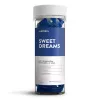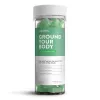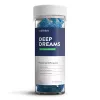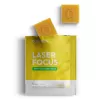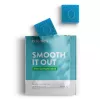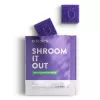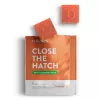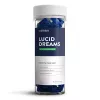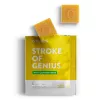Cannabis has been a part of human history for thousands of years, valued for its medicinal, spiritual, and recreational benefits.
But in the modern world, it’s more complex than ever—especially with the rise of legal cannabis markets, scientific research, and therapeutic interest. Two compounds, in particular, have come to dominate the conversation: THC and CBD.
THC and CBD products are the most widely known and studied cannabinoids, and while they originate from the same plant, their effects on the human body and brain are remarkably different.
THC products are famed—and sometimes feared—for their psychoactive properties, the compound responsible for the euphoric “high” associated with cannabis.
CBD, on the other hand, offers many of the same therapeutic benefits without the mind-altering effects, making it a go-to choice for those seeking relief without intoxication.
Public interest in these two compounds has surged in recent years, as more people explore cannabis for medical or wellness purposes.
Yet, despite their popularity, there’s still a great deal of confusion. What exactly is the difference between THC and CBD? How do they interact with the body? Are they legal? Safe? Do they work better alone or together?
Whether you’re new to cannabis or looking to deepen your knowledge, understanding the differences and similarities between THC and CBD can empower you to make better choices for your health and lifestyle.
What Are Cannabinoids?
To understand THC and CBD, we first need to understand the family they belong to: cannabinoids.
Cannabinoids are naturally occurring compounds found in the cannabis plant—more than 100 have been identified so far.
These compounds interact with the human body's endocannabinoid system (ECS), a complex cell-signaling system that helps regulate a wide array of functions and processes, including mood, sleep, appetite, pain, immune response, and memory.
The ECS consists of three core components: endocannabinoids (natural cannabinoids produced by the body), receptors (primarily CB1 and CB2), and enzymes that break down cannabinoids after they've done their job.
Think of the ECS as a vast communication network—when cannabinoids enter the body, they engage with this system to help maintain internal balance, or homeostasis.
What makes phytocannabinoids—cannabinoids from the cannabis plant—so fascinating is how they mimic or influence our own endocannabinoids. THC and CBD, although structurally similar, interact with ECS receptors in notably different ways.
THC binds directly to CB1 receptors, primarily found in the brain and central nervous system, which explains its psychoactive effects.
CBD, on the other hand, doesn’t bind strongly to either receptor. Instead, it modulates them, while also influencing other non-cannabinoid receptors in the body such as serotonin and vanilloid receptors, which are involved in mood regulation and pain perception.
It’s important to note that cannabinoids aren’t the only therapeutic compounds in cannabis. The plant is rich in terpenes, flavonoids, and other molecules that contribute to its overall effect profile, but we’ll get into that later.

What Is THC?
THC, or tetrahydrocannabinol, is perhaps the most famous cannabinoid in the cannabis plant.
It’s the compound responsible for producing the euphoric, mind-altering effects often associated with marijuana use. But while many people recognize THC as “what gets you high,” its effects go far beyond intoxication.
To truly understand THC, it’s essential to look at its chemical structure, interaction with the human body, therapeutic uses, and the legal and cultural debates that surround it.
The Chemistry Behind the High
THC’s scientific structure closely resembles anandamide, a naturally occurring endocannabinoid in the body. Anandamide is often referred to as the “bliss molecule” due to its role in regulating mood and pleasure.
Because of their structural similarity, THC can bind directly to CB1 receptors in the brain, a key component of the endocannabinoid system.
This strong binding is what produces the characteristic mental and emotional effects of THC: altered perception, heightened sensory awareness, euphoria, and sometimes anxiety or paranoia.
The intensity of the psychoactive experience depends on various factors: the dose, method of consumption (smoking vs. THC edibles), user tolerance, body chemistry, and even the terpene profile of the strain.
Potential Risks and Side Effects
Of course, THC isn’t without drawbacks. While many people enjoy its effects, others may experience unwanted side effects, especially at higher doses or when they’re inexperienced. Common side effects include:
- Dry mouth
- Red eyes
- Short-term memory impairment
- Slowed reaction time
- Anxiety or paranoia
- Increased heart rate
Some users, especially those predisposed to mood disorders or psychosis, may find THC exacerbates those conditions.
Tolerance can also build quickly, requiring higher doses over time to achieve the same effect.
The Bottom Line on THC
THC is a powerful and multifaceted compound that offers both recreational pleasure and medical promise. Its ability to engage deeply with the body’s endocannabinoid system makes it highly effective—but also potent, meaning responsible use is crucial.
As research continues and legal landscapes evolve, THC will likely remain at the center of the cannabis conversation for years to come.
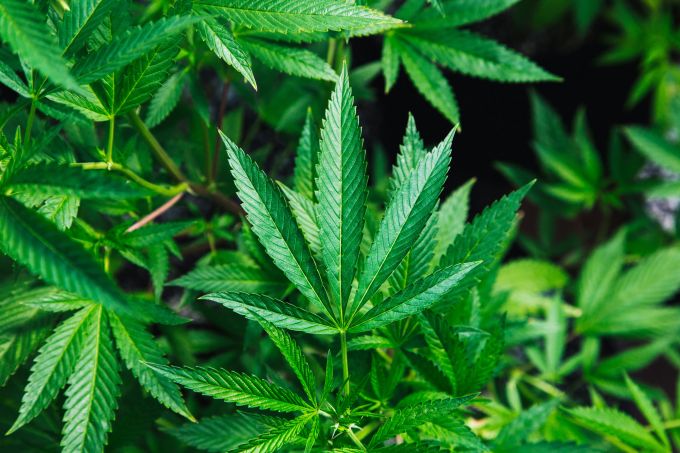
What Is CBD?
Cannabidiol, or CBD, is the second most prominent cannabinoid found in the cannabis plant—but unlike THC, it won’t get you high.
That fact alone has made it incredibly popular over the last decade, helping fuel a wellness movement centered around the calming, therapeutic potential of cannabis without the buzz.
But CBD isn’t just “THC without the fun.” It’s a complex compound in its own right, with a wide array of benefits, unique biological interactions, and evolving legal and cultural relevance.
Understanding CBD’s Relationship with the Body
Unlike THC, which binds directly to CB1 receptors in the brain to produce psychoactive effects, CBD works more indirectly.
It doesn’t fit neatly into the CB1 or CB2 receptors (CB2 being more concentrated in the immune system), but it modulates how these receptors behave. CBD is often described as a “modulator” or “balancer” of the endocannabinoid system, influencing how other cannabinoids are processed and enhancing or buffering their effects.
CBD also interacts with non-cannabinoid receptors—such as serotonin (5-HT1A), vanilloid (TRPV1), and adenosine receptors—which are tied to mood, pain perception, inflammation, and neuroprotection.
This broader pharmacological activity is part of what makes CBD such a promising compound for multiple conditions.
Because it is non-intoxicating, CBD products, such as CBD edibles, are appealing to users who want relief while staying clear-headed—whether they're dealing with anxiety before a big presentation or looking for a natural way to manage pain.
Safety and Side Effects
CBD is generally regarded as safe and well-tolerated, even in large doses. However, it isn’t completely side-effect free. Some users may experience:
- Drowsiness or fatigue
- Diarrhea or digestive upset
- Changes in appetite or weight
- Interaction with other medications (especially those metabolized by the liver enzyme CYP450)
For people on prescription medications, it’s always advisable to consult with a healthcare provider before starting regular CBD use, especially in therapeutic doses.
Some products contain pure CBD isolate, while others are labeled full-spectrum (which includes trace amounts of THC and other cannabinoids) or broad-spectrum (everything but THC).
Many users find full- or broad-spectrum formulas more effective, thanks to the entourage effect—the theory that cannabinoids and terpenes work better together.
The Bottom Line on CBD
CBD has become a wellness phenomenon for good reason. It offers a wide range of benefits without the mental fog or legal concerns that come with THC, making it accessible to a broader audience.
Whether you're dealing with stress, pain, sleep troubles, or just looking for balance, CBD may offer gentle support without disruption. However, understanding dosage, product types, and quality sourcing is essential for getting the most out of your experience.

Key Differences Between THC and CBD
While THC and CBD share the same origin—the cannabis plant—and even the same molecular formula (C₂₁H₃₀O₂), their differences are what define them.
These two cannabinoids offer a perfect case study in how small changes in chemical structure can lead to major differences in function and effect.
Let’s go over the most important distinctions between THC and CBD, from how they interact with the body to their legal status and medical applications.
1. Psychoactivity
This is the most fundamental difference between the two:
- THC is psychoactive. It binds directly to CB1 receptors in the brain, triggering a cascade of effects that alter mood, perception, cognition, and motor control. These effects are what people describe as a “high.”
- CBD is non-psychoactive. It does not bind to CB1 receptors with any significant affinity and, in fact, can modulate how THC binds, potentially reducing its psychoactivity. Users of CBD typically report feeling calm, focused, or simply balanced—but not high.
This difference alone often determines which cannabinoid a person chooses.
Those seeking euphoria or a potent shift in consciousness may prefer THC; those looking for symptom relief without intoxication usually reach for CBD.
2. Popular Uses
Both THC and CBD are enjoyed for a variety of everyday benefits—whether you're looking to unwind, get better rest, or simply feel more in tune with your body and mind.
While they work in different ways, each brings something unique to the table:
THC is often used to:
- Melt away aches and tension
- Boost your appetite (hello, munchies!)
- Ease queasiness
- Drift off to sleep faster
- Soothe tight or twitchy muscles
CBD is commonly used to:
- Calm stress and promote emotional balance
- Help keep your mind clear and focused
- Unwind without the high
- Support better sleep and a stable mood
- Take the edge off of everyday aches and soreness
Some people prefer one or the other, while others find the sweet spot is using both together. It all comes down to how you want to feel.
3. Side Effects and Risks
While both are considered safe for most users, they have distinct risk profiles:
- THC Side Effects:
- Anxiety or paranoia (especially at high doses)
- Dry mouth and red eyes
- Impaired short-term memory
- Delayed reaction time
- Potential for dependence with heavy use
- CBD Side Effects:
- Mild fatigue or drowsiness
- Changes in appetite
- Diarrhea (in rare cases or high doses)
- Potential interaction with other medications
It’s worth noting that CBD may actually help counteract some of THC’s negative effects, including anxiety and memory impairment.
This makes it an attractive compound for people who want the benefits of THC with a smoother experience.
4. Consumer Experience and Intent
Finally, the reason someone uses THC or CBD often comes down to intent:
- THC is typically sought for:
- Recreation
- Euphoria
- Potent symptom relief
- Altered consciousness
- CBD is typically sought for:
- Daily wellness
- Stress management
- Subtle or long-term symptom relief
- Non-psychoactive therapeutic support
Understanding the Divide
The differences between THC and CBD are not just chemical—they shape how people interact with cannabis entirely. From the high and the health benefits to the law and the lifestyle, these two cannabinoids paint a picture of contrast and complexity.
And while both offer real value, knowing the distinctions helps consumers make better-informed decisions and tailor their cannabis experience to their individual needs.

Similarities Between THC and CBD
While THC and CBD often steal the spotlight for their differences—most notably, the presence or absence of a high—they actually share a great deal in common.
These two compounds are like siblings from the same family: chemically related, functioning within the same bodily systems, and offering complementary therapeutic potential.
Understanding their similarities not only deepens our comprehension of how cannabinoids work, but also highlights the collaborative nature of cannabis-based healing.
1. Both Are Cannabinoids from the Cannabis Plant
THC and CBD are both phytocannabinoids, meaning they’re naturally occurring cannabinoids produced by plants. Specifically, they come from Cannabis sativa, which includes both marijuana and hemp varieties.
These two cannabinoids dominate the plant’s chemical profile and are the most abundantly produced by most cannabis strains.
Despite differences in effects, their chemical structure is remarkably similar: both have the molecular formula C₂₁H₃₀O₂, though the atoms are arranged slightly differently.
This minor structural variation accounts for the major differences in psychoactivity and receptor binding—but their shared origin roots them in the same plant-based pharmacological system.
2. Both Interact with the Endocannabinoid System (ECS)
THC and CBD both exert their influence through the endocannabinoid system, which includes:
- CB1 receptors, primarily located in the brain and central nervous system
- CB2 receptors, primarily found in the immune system and peripheral organs
- Endocannabinoids like anandamide and 2-AG, produced naturally by the body
- Enzymes that break down cannabinoids once their work is done
THC binds directly to CB1 receptors, while CBD influences both CB1 and CB2 indirectly and also interacts with non-cannabinoid receptors.
Both, however, help regulate core functions such as mood, sleep, pain sensation, immune response, and stress—albeit through different mechanisms.
3. Both Offer Therapeutic Benefits
The growing body of research surrounding THC and CBD reveals a broad spectrum of therapeutic uses that often overlap. For example:
- Discomfort Relief: Both compounds have shown analgesic effects, though THC may be more potent in cases of acute or severe pain.
- Sleep Support: CBD may improve sleep indirectly by reducing anxiety or pain, while THC can induce drowsiness more directly.
- Stress Reduction: Both compounds can alleviate anxiety in different contexts, though CBD is more consistent in its anxiolytic effects.
Importantly, the combination of THC and CBD can sometimes be more effective than either one alone, due to the “entourage effect”—a theory suggesting that cannabinoids and terpenes work synergistically to enhance therapeutic outcomes.
4. Both Are Naturally Safe at Typical Doses
Though THC and CBD affect the body differently, both are considered safe for most individuals when used responsibly. Neither compound is toxic, and there’s no known lethal dose.
The World Health Organization (WHO) has concluded that CBD is non-addictive and has “no public health-related problems.”
Similarly, while THC can be habit-forming with chronic use, the risk of addiction is low compared to substances like alcohol or opioids.
That said, both compounds can interact with medications and should be used thoughtfully, particularly for individuals with underlying health conditions or those taking prescription drugs.
THC & CBD: More in Common Than You Think
THC and CBD may seem like polar opposites on the surface—one gets you high, the other doesn’t. But dig a little deeper and you’ll see a shared foundation of plant-based healing, deeply rooted in our biology through the endocannabinoid system.
Both cannabinoids offer valuable benefits on their own, but when combined, they unlock a full-spectrum potential that neither can fully deliver alone. Understanding their similarities is the first step toward demystifying cannabis and harnessing its full therapeutic power.

Can You Take THC and CBD Together?
As interest in cannabis grows, so does curiosity about how its many components interact—especially THC and CBD, the two best-known cannabinoids.
While they’re often used independently, a growing body of research and anecdotal evidence suggests that combining them may yield even more potent and balanced effects.
This phenomenon is often attributed to the entourage effect, a theory that the various compounds in cannabis work better together than in isolation.
But what happens when you take THC and CBD together? Can you still get high? Does CBD weaken or enhance THC’s effects? Is it safe, and are there specific reasons to try both at once? Let’s explore.
The Entourage Effect: A Synergistic Partnership
The concept of the entourage effect was first proposed by researcher Dr. Raphael Mechoulam, one of the pioneers in cannabis science.
The idea is simple: cannabis compounds—including cannabinoids, terpenes, and flavonoids—work synergistically to produce more therapeutic and nuanced effects than any one compound can produce alone.
When THC and CBD are consumed together, the combination can create a broader, more balanced effect profile. For example, THC may offer stronger relief from pain or insomnia, while CBD can soften THC’s psychoactive intensity, reducing potential anxiety or paranoia.
Together, they can produce a smoother, more functional experience for many users.
How CBD Modulates THC
CBD doesn’t just coexist with THC—it interacts with it on a chemical level. Specifically, CBD is thought to alter the binding affinity of THC to CB1 receptors in the brain. This modulation may result in:
- Reduced intensity of the high: CBD can buffer some of THC’s more extreme psychoactive effects, making the experience less intense or disorienting.
- Shortened duration of intoxication: In some cases, CBD may help users return to baseline more quickly.
- More predictable effects: Especially for people who are sensitive to THC or new to cannabis, CBD can make the experience feel more manageable.
This is why many people who use high-THC cannabis for medical purposes seek out strains or products that also contain CBD—not to eliminate the high, but to fine-tune it.
Different Ratios, Different Results
The ratio of THC to CBD in a product or strain makes a huge difference in the resulting effects. Common combinations include:
- High CBD, Low THC (e.g., 20:1): Minimal psychoactivity; ideal for anxiety, inflammation, and daytime use.
- Balanced Ratio (1:1): A gentle psychoactive experience with strong therapeutic effects; often used for pain, sleep, or PTSD.
- High THC, Low CBD (e.g., 10:1 or higher): Strong euphoria with potential anxiety; better for recreational use or severe pain.
Choosing the right ratio depends on your goals, your tolerance, and how you react to each compound individually.
Is It Safe to Mix THC and CBD?
Yes, for most people, combining THC and CBD is safe—especially when used in moderation. However, there are a few things to keep in mind:
- Start low, go slow: Always begin with a low dose of THC and CBD until you understand how they affect you together.
- Mind your tolerance: If you’re used to one compound but not the other, effects may be more intense than expected.
- Watch for drug interactions: Especially with CBD, which may interfere with certain medications.
Pregnant or breastfeeding individuals, as well as those with psychiatric conditions, should consult a healthcare professional before using THC and CBD together.
THC & CBD: Better Together?
Combining THC and CBD is not just possible—it’s often preferable for both medical and recreational users seeking more nuanced or gentle effects.
Thanks to the entourage effect, these two cannabinoids can amplify each other’s strengths while mitigating weaknesses, providing a versatile and powerful tool for wellness.
Whether you're managing pain, stress, or just seeking a balanced experience, exploring the synergy of THC and CBD might be the next step in your cannabis journey.
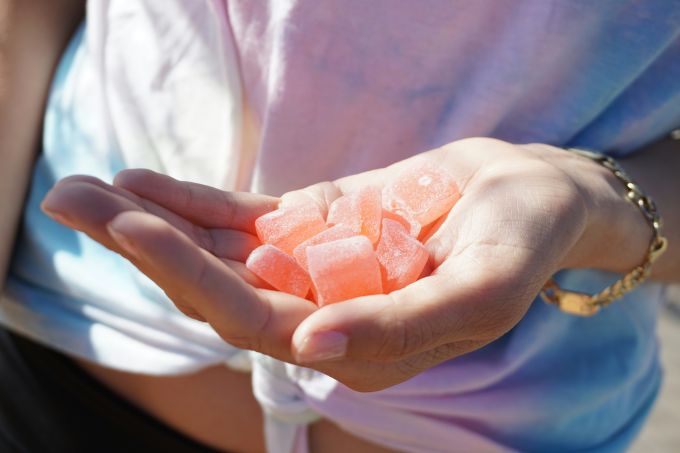
Choosing What’s Right for You
With a deeper understanding of THC and CBD—their effects, differences, and how they interact—the final question becomes: Which one is right for you?
The answer isn’t always simple, because the ideal choice depends on your unique goals, physiology, preferences, and even legal circumstances. Here are some aspects to consider:
1. Define Your Goals
The first and most important step in choosing between THC, CBD, or a combination of both is to identify your specific needs. Ask yourself:
- Are you looking for discomfort relief, better sleep, or reduced stress? Do you just want to have a good time?
- Do you want to feel a noticeable psychoactive effect, or would you prefer something subtle and non-intoxicating?
- Are you using cannabis for recreation, therapeutic reasons, or daily wellness support?
Here’s a basic guideline:
|
Goal |
Recommended Cannabinoid |
|---|---|
|
Euphoria / Creativity |
THC |
|
Stress Relief |
CBD or CBD-dominant |
|
Sleep Support |
THC or THC:CBD blend |
|
Discomfort Relief |
THC:CBD combination |
|
Focus / Mood Balance |
CBD |
|
Appetite Stimulation |
THC |
2. Consider Psychoactivity
One of the clearest dividing lines between THC and CBD is psychoactivity:
- THC will get you high. That may be desirable for some and problematic for others.
- CBD won’t alter your state of mind, making it more suitable for daytime use, work, or social settings where clarity is essential.
If you’re new to cannabis or cautious about feeling impaired, start with CBD. You can always explore low doses of THC later, ideally in combination with CBD to moderate the experience.
3. Understand Your Body’s Sensitivity
Everyone reacts to cannabinoids differently due to factors such as:
- Genetics
- Body weight
- Metabolism
- Tolerance levels
- Hormonal balance
- Gut microbiome
Some people are naturally more sensitive to THC, experiencing heightened anxiety, paranoia, or mental fog even at small doses. Others may find that CBD alone is too subtle and doesn’t offer enough relief.
That’s why experimentation, patience, and journaling your responses can be helpful in finding your personal sweet spot.
4. Think About Your Lifestyle
Your daily routine and lifestyle may also shape your choice:
- If you’re a busy professional, CBD might help you manage stress without impairing performance.
- If you’re dealing with chronic discomfort or insomnia, THC or a THC:CBD blend could offer deeper relief, especially at night.
- If you’re managing mental health, start conservatively—CBD is often a safer starting point.
Also consider whether you need something fast-acting or long-lasting, discreet or potent, mild or pronounced. Customizing your cannabis routine is about aligning the product with how you live and what you need most.
5. Choose Reputable, Lab-Tested Products
No matter which path you choose—CBD, THC, or both—quality matters. The cannabis industry is still under-regulated in many areas, and products can vary widely in potency, purity, and safety.
Look for:
- Third-party lab testing
- Clear labeling with cannabinoid content
- Organic, non-GMO ingredients
- Brands with positive reviews and transparency
Avoid products that make exaggerated claims, have unclear sourcing, or fail to provide a Certificate of Analysis (COA).
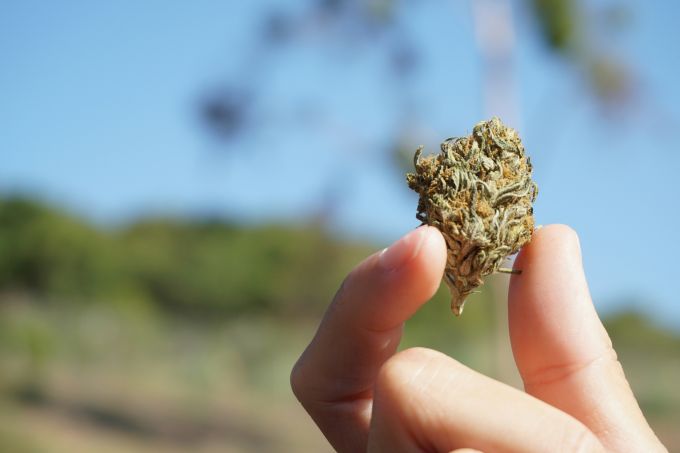
CBD vs. THC: Which is For You?
The cannabis world can feel overwhelming at first glance. With so many products, compounds, and claims, it’s easy to get lost in the buzzwords. But if there’s one relationship worth understanding, it’s that between THC and CBD. These two cannabinoids represent the heart of modern cannabis science, each with its own personality, effects, risks, and rewards. Yet they are also intrinsically connected—born from the same plant, woven into the same biological systems, and often working best when used together.
THC and CBD are like two sides of the same coin. They share a nearly identical molecular structure, interact with the endocannabinoid system, and have been studied extensively for their therapeutic potential.
We are living in a time when cannabis is becoming safer, smarter, and more intentional. Gone are the days of “just getting high.”
Today, cannabis is about self-care, symptom management, and customization. Whether you’re using it for focus, relief, recreation, or recovery, understanding the differences and similarities between THC and CBD is the first step in making empowered choices.
So start small. Be curious. Explore what works for you. And above all, listen to your body—because when it comes to cannabis, your experience is your best guide.

